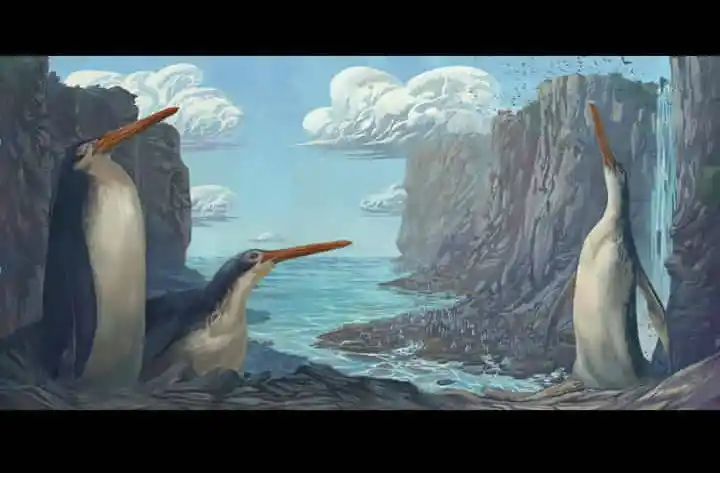A field trip of school going children to hunt for fossils turned really fruitful some summers ago when the group came across what turned out to be new giant penguins.
According to an article in smithsonianmag.com, the year was 2006 and it was during summer that Hamilton Junior Naturalist Club kids and the leader of their club went on a field trip for fossil hunting. The location was New Zealand’s Kawhia Harbour. It was here they spotted — what they initially mistook for a rusty propeller – a large fossil encased in sandstone.
This fossil has now been identified by the experts as a bird skeleton and that too of a new species of giant penguins. Interestingly, these birds were 4.5 feet tall and lived 30 million years ago.

Steffan Safey, who was 13 years old when he along with his friends found the fossil said: “It’s sort of surreal to know that a discovery we made as kids so many years ago is contributing to academia today.”
Using 3-D scanning techniques a team of palaeontologists from Massey University and Bruce Museum created a digital model of the giant penguin. Comparing the model they designed to the species existing today around the world, they found that this new species was in existence between 27.3 and 34.6 million years ago. This was a time when the region was submerged underwater. The fossil of the giant penguin – one of the complete ones till date – was of the size of a 10-year-old child.
Also read: Rattlesnakes, masters of fatal deception
When compared with other penguins found in the region, although the resemblance was there, the new species had longer legs. Taking a que from that, it was decided by the team to name the new species Kairuku waewaeroa, which in Maori language means “long-legged”, Hannah Seo said in Popular Science.
The details and results of the research was published this month in the Journal of Vertebrate Palaeontology.
The author of the study Daniel Thomas observed in a statement: “These longer legs would have made the penguin much taller than other Kairuku while it was walking on land, perhaps around 1.4 meters tall, and may have influenced how fast it could swim or how deep it could dive.” Thomas who is a Massey University palaeontologist, added: “It’s been a real privilege to contribute to the story of this incredible penguin. We know how important this fossil is to so many people.”
The fossil of the penguin almost dates back to as far as dinosaurs while several of the oldest specimens are from New Zealand.
Also read: Study reveals how modern horses have been tireless migrants
When compared to the Emperor penguins, the largest living penguins today are around four feet tall. Giant penguins who were found on the Earth millions of years ago were also thinner, states Mindy Weisberger.
One of the reasons for the ancient penguins to grow large may be because these birds lived and evolved into a large species in isolated habitats that had no predators. The new species provides palaeontologists a better and more complete picture of the diversity of giant penguins and their evolutionary history.
Speaking about the discovery by the children, Mike Safey, president of the Hamilton Junior Naturalist Club said: "It was a rare privilege for the kids in our club to have the opportunity to discover and rescue this enormous fossil penguin. We always encourage young people to explore and enjoy the great outdoors. There's plenty of cool stuff out there just waiting to be discovered."




















